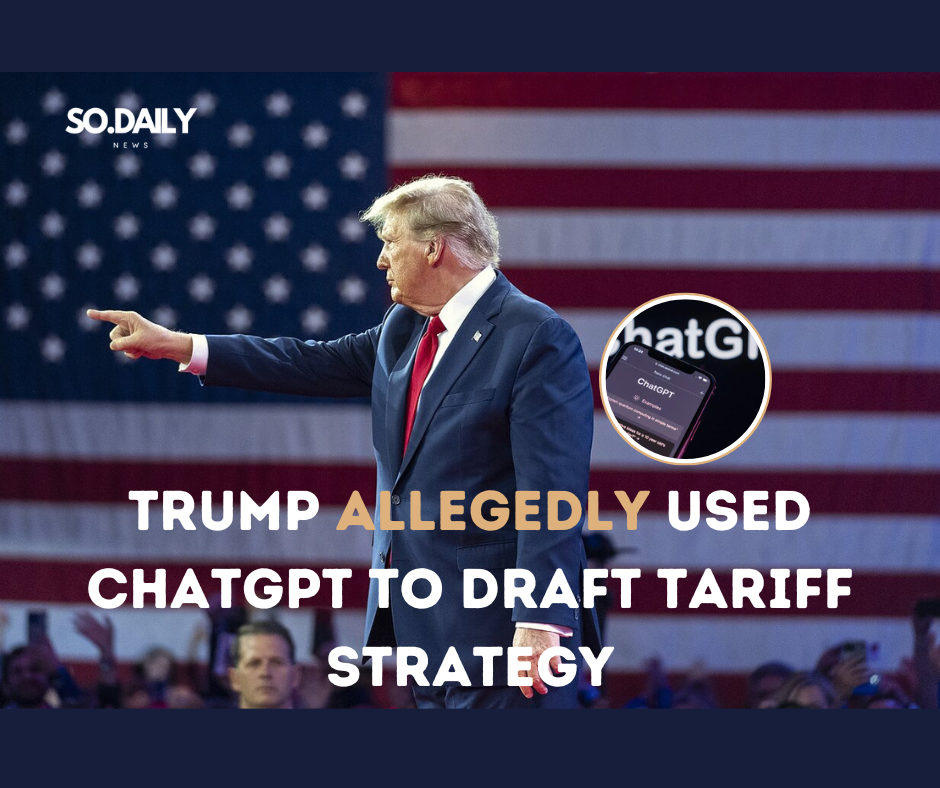In a political firestorm that has sparked intense scrutiny, former President Donald Trump is facing accusations that his newly proposed tariff plan may have been generated—or at least heavily inspired—by artificial intelligence tools like ChatGPT. The controversy arises from the striking similarity between the tariff formulas introduced by Trump and those frequently generated by popular AI chatbots when prompted with trade policy scenarios.
The heart of the matter centers around Trump’s recent announcement of a sweeping new tariff strategy. Under this plan, all imports to the United States would be subject to a flat 10% tariff, with additional country-specific tariffs calculated using a simple formula: the U.S. trade deficit with a specific country divided by that country’s exports to the U.S., then halved to create the final tariff percentage. On paper, the plan appears straightforward—but that’s exactly what has raised red flags among economists and critics.
The formula, critics argue, is overly simplistic and bears a concerning resemblance to answers generated by artificial intelligence systems such as ChatGPT, Claude, and other large language models. In controlled tests, these AI tools consistently suggest similar strategies when asked how to address trade deficits. While the AI-generated responses often include disclaimers warning of the dangers of such policy approaches, the resemblance to Trump’s proposed formula has led to speculation that artificial intelligence may have influenced the former president’s economic plan.
Economists have not been kind to the proposal. James Surowiecki, a respected economic analyst, called the approach “extraordinary nonsense,” warning that the formula lacks the complexity and real-world sensitivity required for effective international trade policy. Other experts have chimed in, highlighting that trade imbalances are the result of a wide range of global economic factors, and cannot be resolved through a single mathematical shortcut. Many also warned that implementing these tariffs would almost certainly invite retaliation from trade partners, resulting in higher consumer prices, disrupted supply chains, and job losses in export-dependent industries.
Despite the mounting criticism, Trump and his team have not acknowledged any connection between the tariff plan and AI-generated guidance. Campaign aides have publicly insisted the policy was developed through standard economic analysis and years of trade experience. However, the striking similarity to chatbot-generated responses has left many political observers skeptical. While there is no confirmed evidence that Trump personally used ChatGPT or any AI tool to draft the policy, the conversation has once again placed artificial intelligence under the spotlight—particularly its growing influence on real-world decision-making.
The rollout of the new tariffs, set to begin on April 5, has already rattled markets. Investors are bracing for the potential fallout, particularly in sectors like automotive manufacturing, consumer electronics, and agriculture—industries that rely heavily on imported components or foreign markets. Global trading partners have reacted swiftly, with some governments hinting at reciprocal tariffs should the U.S. follow through with the policy.
Beyond the economic impact, the controversy has reignited a larger debate: should AI be used to shape public policy, even indirectly? While tools like ChatGPT have become increasingly popular for brainstorming and summarizing complex topics, critics argue that their output should never be mistaken for sound economic strategy. The danger lies not just in relying on AI, but in doing so without transparency or proper oversight.
This incident highlights a deeper issue that is likely to grow more pressing in the years ahead. As artificial intelligence tools become more advanced and accessible, how will political leaders balance the convenience of instant answers with the responsibility of governing a complex world? Will voters tolerate policies that may be based on algorithms rather than expert analysis? And most importantly, how can the public be sure that decisions affecting the global economy aren’t being quietly influenced by technology designed to simulate, rather than understand, human reasoning?
For now, the Trump campaign is standing by its plan, arguing that it will protect American jobs, rebalance trade relationships, and revive domestic manufacturing. Critics, however, warn that if this policy is indeed AI-inspired, it may mark a new and unsettling chapter in how economic decisions are made at the highest levels of government.
Only time will tell whether the plan proves effective—or whether it becomes a cautionary tale of mixing artificial intelligence with economic nationalism.
